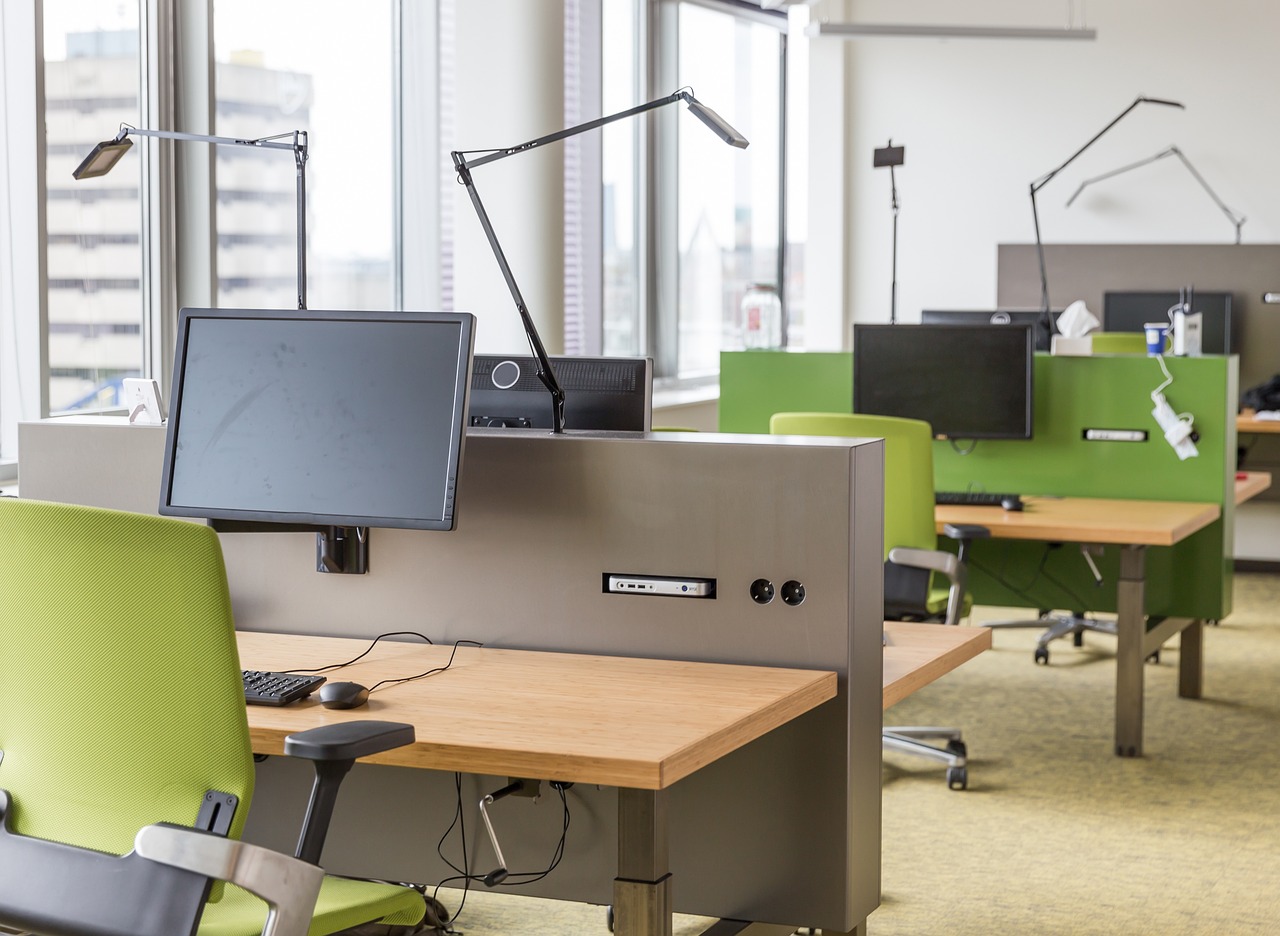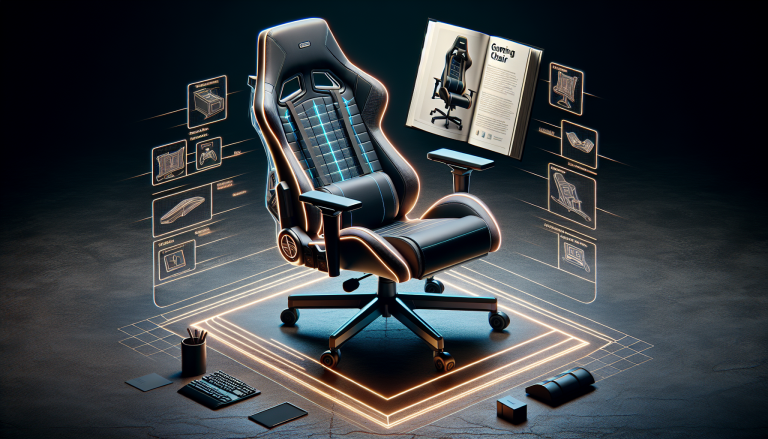Whether you’re playing games or working on a computer, a good office chair is essential. What are the criteria for choosing the right chair? Here we explain everything you need to know.
If you work in a job that requires you to sit at a desk for long hours or if you are a video game enthusiast, the importance of a good chair will not have escaped you. With basic models costing a few dozen euros and ergonomic models costing well over a thousand euros, office chairs and armchairs offer a wide range of options and quality levels.
The right chair is the one that is adapted to what you are doing.
For this article, we contacted Max Newmann, a specialist in ergonomics and occupational health. The first thing Mr Newmann told us was that the best office chair is the one that is adapted to the workstation and its constraints. This may seem obvious, but if you move around a lot, use a high work surface or just want to relax, your needs are very different. A good office chair should serve the two main purposes of comfort and health.
A world of standards
The first difficulty often encountered when sitting at a desk is that it is fixed. It is up to us to adapt to this often standardised world in which the work surface is approximately 74 cm from the floor. Our bodies are also of a fixed size – from a certain age onwards, of course – but the constraints are not the same if you are 1.55 m or 1.95 m tall. The further you deviate from the average height of human beings, the more difficulties you will encounter – as in many areas, you might say.
First of all, it is worth noting the recommended position in front of a desk. The back should form a right angle with the femurs, while the femurs should form a 90° angle with the shins, with the feet flat on the floor. In order to achieve this ideal position, you need to be able to adjust several elements of the chair. The first adjustment required is the height of the seat. A chair mounted on a jack is a first step to adjusting the height. This option is easily found, even in the entry-level range.
Armrests can be adjusted in four dimensions
Once the seat is correctly positioned for the legs, the smallest among us will be faced with a problem of upper body position in relation to the desk. It is recommended that the forearms rest on the desk without the desk edge applying targeted compression. To achieve this, the seat must be at the right height, this time not in relation to the floor, but to the work surface. Armrests are essential to ensure continuity with the desk. The elbow should be able to rest on them without raising the shoulders. Adjusting the armrests is not an easy task. Generally, for office chairs, the possible adjustments are expressed in “directions”. An armrest that can simply be adjusted for height is marked as 1D, while one that adds adjustments for orientation and depth is marked as 3D. There is also a fourth dimension, which consists of lateral movement.
The upper body should not be too close to or too far from the desk either. The armrests should be level with the desk, so they should not be too long or set too low so as not to interfere with the positioning of the chair. Max Newmann has a tip on how to deal with some of these situations: “Sometimes you can just put the armrests on backwards and save a few centimetres if they are not adjustable.
If you also want to use your chair to play with a joystick, some armrests can be swivelled to support your arms in this position. This is something to bear in mind when choosing a chair.
Finally, for the armrests, make sure that you use soft materials as much as possible. Hard plastic and metal will be much less comfortable during long working or gaming sessions.
A backrest not to be ignored
Another element worthy of particular attention when choosing an office chair is the backrest. It is even crucial to avoid back pain as much as possible. Here again, our ergonomics specialist has given us a list of requirements.
First of all, the backrest must be high enough to reach the shoulders. It is important that the entire back maintains contact with the backrest. To achieve this, it is essential to adjust the lumbar region. Be careful, because there are different degrees of lumbar adjustment. Some chairs simply add a detachable cushion, the thickness of which varies from model to model and which can be counterproductive. It is important to be able to keep your back firmly in the seat. One of the best solutions is an inflatable lumbar support for precise adjustment.
The ergonomics expert we consulted stresses the importance of being able to unlock the backrest. The backrest should be able to tilt backwards to accommodate the movement of the back when you want to rest a little. There are several types of unlocking. The simplest is simply to adjust the backrest angle. Some models can be tilted up to 180° for an almost reclining position. There are also rocker mechanisms that are spring-loaded. They can be simple and tilt the seat with the backrest or off-centre so as not to raise the feet. The most advanced tilting systems even allow asynchronous movement of the backrest and seat.
Many gamer models are based on the bucket seat format from the automotive world, a design that extends the backrest up to the back of the head. Newmann does not recommend this type of fixed headrest, as preventing the head from moving backwards is not good during relaxation and can lead to neck and headaches.
Footrests: the solution for small people
As mentioned above, the often fixed height of desks sometimes forces us to choose between a good height for the chest or one where the feet touch the floor. If you are under 1.75 m tall, you may be faced with this dilemma. One solution is to adjust the height of your seat to a comfortable arm position and then opt for a footrest. The latter will compensate for the gap between the feet and the floor to avoid too much pressure from the edge of the seat on the thigh, and the resulting blood circulation problems.
Materials and finishes: the difficulty of buying online
So far, it has been fairly easy to find chairs and armchairs that meet some or all of the above tips. There is still the question of the materials used for the seat… As far as the seat is concerned, the density of the foam should be taken into account. Unfortunately, this information is often forgotten in the specification sheets. Keep an eye out for the words “high density foam” which correspond to more than 28 kg/m³ and ensure a minimum of comfort for the buttocks. Ergonomic models sometimes opt for mesh seats that easily fit the shape of the body.
The same material can be found on the backs of some armchairs. As with the seat, the advantage is that it adapts well to different shapes and is breathable so that you don’t sweat in the heat. This is less obvious with office chairs covered in leather or imitation leather (often indicated as PU leather, for polyurethane). The quality of the seams should also be closely monitored. It is quite easy to spot seams that will give way after only a few months of use on entry-level models.
There are also different qualities of castors. Some are suitable for soft floors such as carpets and rugs, while others are more comfortable on hard floors. Again, this information is not always readily available.
As with many products, the finishes depend on the range in which the product is placed. Entry-level chairs use materials that are often not very durable, poor quality foam or even screws that fail quickly. Adding a few dozen euros to your budget can prevent you from having to go to the cash register too often. You should also not hesitate to take advantage of the return policy to try out your office chair for a few days. Most online shops offer a 14-day return policy. Some are more permissive and extend this period to one month.
To help you sort through the plethora of office chairs and armchairs on offer, we’ve put together a dedicated comparison. Whether you’re playing or working, at home or in the office, we’d like to point you in the right direction.



